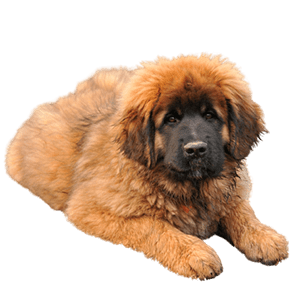Leonberger

“Leonbergers come from the German city of Leonberg, where they have been supposedly bred beginning in the 1830s to resemble the lion in the town crest. The metropolis’s mayor, Heinrich Essig, was a dog breeder and is stated to have crossed a Landseer Newfoundland with a “Barry” (precursor to Saint Bernard), after which a Great Pyrenees. However, this declaration is disputed as there are also descriptions of very Leonberger-like puppies in Austria as long ago as 1585. Further, present-day geneticists say more excellent breeds than could need those three to produce the traits visible in early Leos. Regardless, Essig was a skilled promoter, and he placed his puppies with the celebrities of the day, including numerous royal families.
Regular people also appreciated the breed as all-purpose farm puppies, watch puppies, and draft puppies. In the second half of the 19th century, the breed became very famous and commanded a huge fee, in large part because the breed’s creator gave them to the Aristocracy to create a fad for them. At the time of World War I, Leonbergers pulled ammunition carts. Only 5 Leos survived that war, and 8 Leos survived World War II. All modern Leonbergers trace to those puppies, following a concerted attempt by a group of German breeders to rescue them in 1945. The breed is famous in Europe, even pretty unusual in America. The first Leo came to USA in 1971. The AKC identified the breed in 2010, and it has surged in reputation since. Leos have served as water rescue puppies, trained to jump from helicopters to reach drowning people.”
- Type - Working
- Weight -100-170 lb
- Height- 25.5-31.5"
- Family -Mastiff
- Date of Orgin-1900s
- Area of Orgin -Germany
Energy Level
Exercise Requirements
Playfulness
Affection Level
Friendliness To Dogs
Friendliness To Other Pets
Friendliness To Strangers
Watchfulness
Ease of Training
Grooming Requirements
Heat Sensitivity
Vocality
Temperement
Leo is a dedicated and honest companion, even-tempered, and affectionate. They are keen to please, and training is pretty comfortable. They are friendly to strangers but additionally protect their owners. They are usually good with different pets and dogs, although a few may be domineering toward various other dogs. Quiet and calm indoors, they’re, however, excellent watchdogs.
Upkeep
Leos are more athletic and agile than most giant breeds; however, they’re not appropriate for strolling. They experience an everyday stroll or romp or even longer hikes. They are also good at pulling carts, swimming, and search and rescue. The thick coat needs brushing numerous times per week and daily during shedding seasons. They love cold weather.
Health
“Major diagnosis elbow dysplasia, gastric torsion, osteosarcoma
Occasionally seen: entropion, ectropion, polyneuropathy
Suggested tests: hip, eye, DNA for polyneuropathy
Life span: 8–11 years”
Disclaimer
Note: While the characteristics mentioned here may frequently represent this breed, dogs are individuals whose personalities and appearances will vary. Please consult the adoption organization for details on a specific pet.
